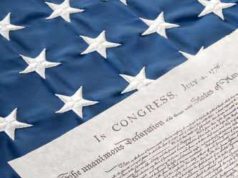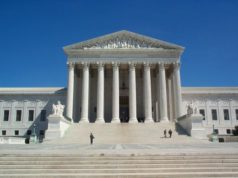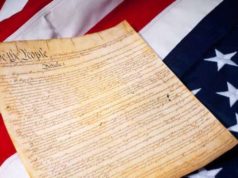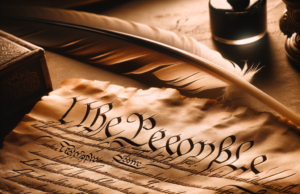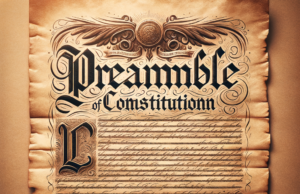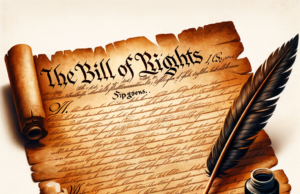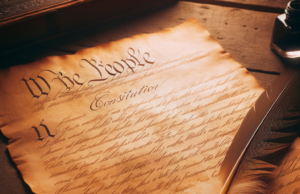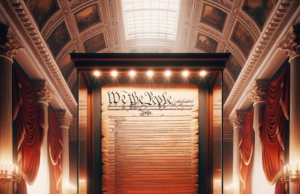Table of Contents
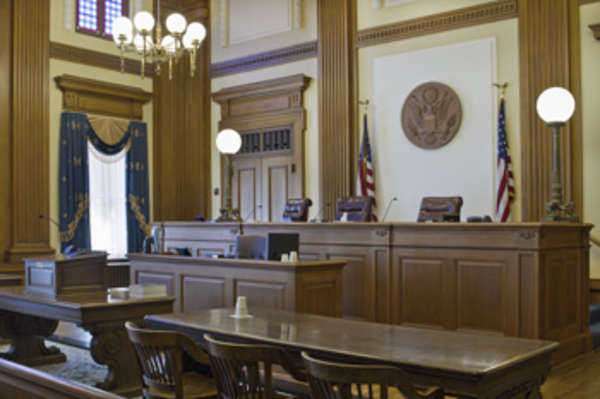
The Supreme Court is one of the most powerful institutions in the world. It is the highest court of appeal in the United States, and it has the final say on all legal disputes in the country. It is an institution that is steeped in history and tradition. Its origins can be traced back to the founding of the United States, and it has played a significant role in shaping the nation’s laws and policies.
One of the most important aspects of the Supreme Court’s history is the Supreme Court Clause. This clause, found in Article III of the U.S. Constitution, outlines the powers of the Supreme Court and defines its role in the federal government. In this article, we will explore the Supreme Court Clause, its history, and its significance to American law and politics.
The Supreme Court Clause: A Brief Overview
The Supreme Court Clause is a short but powerful clause that appears in Article III of the U.S. Constitution. It reads as follows:
“The judicial Power of the United States, shall be vested in one supreme Court, and in such inferior Courts as the Congress may from time to time ordain and establish. The Judges, both of the supreme and inferior Courts, shall hold their Offices during good Behaviour, and shall, at stated Times, receive for their Services a Compensation, which shall not be diminished during their Continuance in Office.”
This clause outlines the basic structure of the federal court system in the United States. It establishes the Supreme Court as the highest court in the land and allows Congress to create lower federal courts as needed. It also establishes the lifetime tenure of federal judges and ensures that their salaries cannot be reduced while they are in office.
The Origins of the Supreme Court Clause
The Supreme Court Clause can be traced back to the debates and discussions that took place during the Constitutional Convention of 1787. The framers of the Constitution recognized the need for a strong, independent judiciary to interpret the laws and settle disputes between the federal government and the states. They also understood the importance of creating a federal court system that would be fair, impartial, and free from political influence.
The Supreme Court Clause was included in the final draft of the Constitution as part of Article III. This article outlines the powers of the federal judiciary and establishes the Supreme Court as the highest court in the land.
The Supreme Court in Early America
When the Supreme Court was first established in 1789, it was a relatively small institution. It consisted of just six justices, who were appointed by the President and confirmed by the Senate. The Court met for the first time on February 2, 1790, in New York City, which was then the nation’s capital.
In the early years of its existence, the Supreme Court had a relatively low profile. It heard a few cases each term, and its decisions were not always respected or followed by the other branches of government. However, this began to change in the early 1800s, when the Court started to assert its authority and establish itself as a co-equal branch of government.
One of the most important cases in the early history of the Supreme Court was Marbury v. Madison, which was decided in 1803. This case established the principle of judicial review, which gives the Court the power to review the constitutionality of laws and other government actions. The Court’s decision in Marbury v. Madison helped to cement its role as a key player in American politics and cemented its position as the guardian of the Constitution.
The Supreme Court in the 19th Century
The 19th century was a time of great change and growth for the United States, and the Supreme Court played an important role in shaping the country’s laws and policies.
One of the most important cases of the 19th century was Dred Scott v. Sandford, which was decided in 1857. This case involved a slave named Dred Scott who sued for his freedom after his owner died. The Supreme Court ruled that Scott did not have the right to sue in federal court because he was not a citizen of the United States. The Court also held that the Missouri Compromise, which had prohibited slavery in certain territories, was unconstitutional. The decision in Dred Scott v. Sandford had far-reaching consequences and helped to deepen the divisions between North and South in the years leading up to the Civil War.
Another key case of the 19th century was Plessy v. Ferguson, which was decided in 1896. This case involved a Louisiana law that required separate railway cars for white and black passengers. The Supreme Court upheld the law, ruling that “separate but equal” facilities were constitutional. This decision paved the way for segregation in the South and helped to perpetuate racial discrimination for many years.
The Supreme Court in the 20th Century
The 20th century was a time of great change and upheaval in the United States, and the Supreme Court was called upon to address many of the key legal and political issues of the day.
One of the most significant cases of the 20th century was Brown v. Board of Education, which was decided in 1954. This case involved a challenge to racial segregation in public schools, and the Supreme Court held that segregation was unconstitutional. The decision in Brown v. Board of Education marked a major turning point in American history and helped to pave the way for the Civil Rights Movement.
Another landmark case of the 20th century was Roe v. Wade, which was decided in 1973. This case involved a challenge to a Texas law that prohibited most abortions. The Supreme Court held that the law was unconstitutional and that women had a constitutional right to choose to have an abortion. The decision in Roe v. Wade remains one of the most controversial and divisive decisions in Supreme Court history.
The Supreme Court Today
Today, the Supreme Court is a powerful and influential institution that continues to shape American law and politics. The Court hears dozens of cases each term and issues decisions that affect the lives of millions of Americans.
The Supreme Court is currently composed of nine justices, who are appointed to life terms by the President and confirmed by the Senate. The Court’s current Chief Justice is John G. Roberts, Jr., who was appointed by President George W. Bush in 2005.
In recent years, the Supreme Court has tackled some of the most important legal and political issues of our time, including same-sex marriage, healthcare reform, and voting rights. The Court’s decisions have been the subject of intense debate and controversy, and its justices have become some of the most closely watched and scrutinized figures in American public life.
Conclusion
The Supreme Court Clause is a key part of the U.S. Constitution and outlines the powers of the highest court in the land. The Supreme Court has played a critical role in American history and has helped to shape the nation’s laws and policies. From Marbury v. Madison to Roe v. Wade, the Court has issued decisions that have changed the course of American history and helped to ensure the rights and freedoms of all Americans. As the Court continues to tackle some of the most important legal and political issues of our time, its decisions will continue to shape the future of the United States for generations to come.
The passage of the United States Constitution might be reasonably considered to commence the history of the Supreme Court of America, but the actual operation of the Court is only loosely addressed by the document. For that reason, Supreme Court history has been marked by evolving powers and procedures, enacted through the mandate of Congressional legislation or the example of the Supreme Court’s own decisions. The first such milestone in Supreme Court history, and the beginning of the institution as a viable presence on the American political scene, came with the earliest Congressional legislation, enacted as the Judiciary Act of 1789.
Having been established in practical terms, the Supreme Court first officially met on February 1, 1790, though travel delays prevented some of the Justices from reaching the meeting point, the Merchants Exchange Building in New York City, until the next day. In this first year of Supreme Court history, however, the institution was not given over to hearing cases, but rather to providing for future procedures and regulations for hearing cases.
The following initial decade in Supreme Court history was marked by complaints of the institution’s overly-limited purview. The Court was made up at this point of six members, with five Associate Justices in addition to the Chief Justice. The practice of “riding circuit” was then required of Supreme Court Justices, thereby mandating that they periodically leave their main duties behind to personally preside over cases in circuit courts.
The Justices had to render this service at two points during the year in all of the circuit court districts.This requirement would be maintained for the initial 101 years in the history of the Supreme Court. Its abolition in 1891 came after a long series of complaints by the Justices that this requirement was overly demanding. Earlier, in 1869, the number of Justices had been decisively established, after five changes, to the present-day number of nine.
There have been sixteen Chief Justices in the history of the Supreme Court, under whose stewardship the Court has been taken into different philosophical and political directions. That being said, the length of these different phases in Supreme Court history have led the institution as a whole to be noted, by both participants and outside observers, for an essentially consistent legal culture.
The history of the Supreme Court has seen the participation of 97 Associate Justices, who join the Court on average after every 22 months and remain there for 15 years. Keeping in mind that the Court’s commonly-accepted purpose is to rule on specific cases, not to render general policy, the consequences of Court decisions are often interpreted in terms of a right/left political divide.
The recent history of the Supreme Court, in particular, has been popularly interpreted from a political perspective, with the post-World War II Warren and Burger Courts being placed within the liberal climate of that time, while the Rehnquist Court is identified with the conservative tenor of the Reagan Administration, during which it began.



